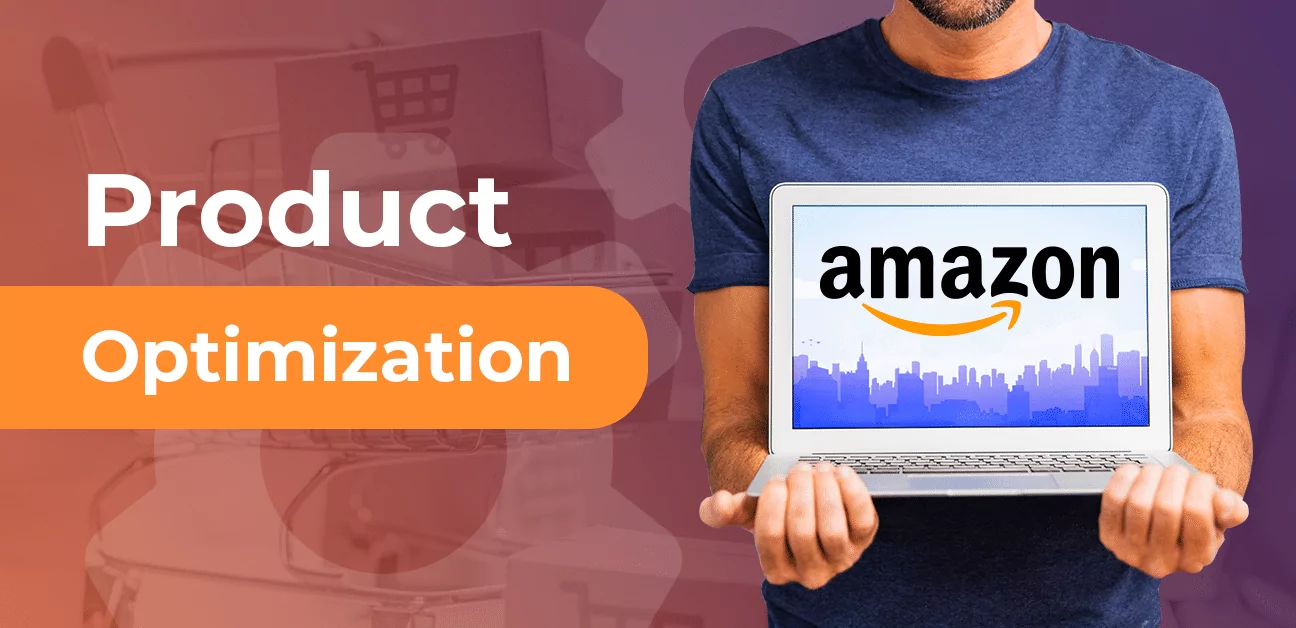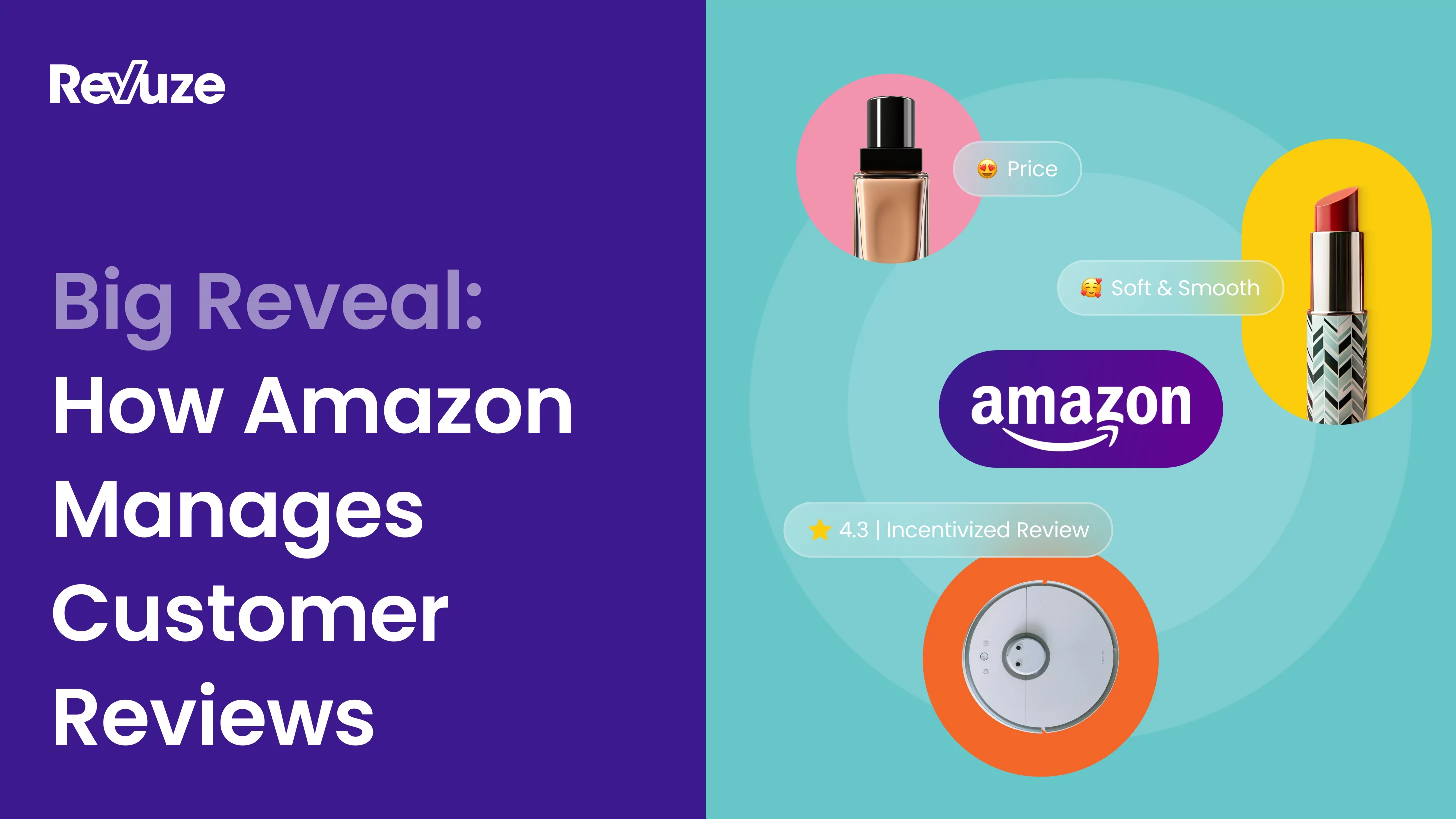
With thousands of other listings to compete with, it can be challenging to get your product to rank higher in Amazon search results. And unless you do something about this, it can cost you dearly because product visibility means everything on the platform. Just think about it – how often have you gone beyond page 2 to find a product you want to buy? Chances are you’ll end up finding something you like among the top-ranking products on the first page of your search results.
That’s why it’s crucial to start your Amazon listing optimization efforts and improve the visibility of your product in relevant search results. After all, Amazon’s customer retention rate is 90%, and everyone who is selling products online would dream to sell their products via Amazon, especially where the retention rate can provide you a nice & steady income or amplify your revenue.
This guide will provide you with actionable steps on how to optimize your listing on Amazon.
What is Amazon Listing Optimization?
Simply put, Amazon listing optimization is the process of making improvements to your ad listing with the intention of driving search visibility, clicks, and conversions. The process involves a number of steps including keyword research, text optimization, image optimization, and collecting product reviews to name a few.
The idea is to ensure that your ads show up in the most relevant search results so that it stands a chance of attracting the right audience. For instance, you won’t expect someone who’s searching for a “kiddie pool with slide” to click on an ad about scented candles or desk calendars. But they’ll likely click on an ad about a kiddie pool with a slide.
The best part about Amazon listing optimization is its direct and indirect impact on other aspects of your performance on the platform – from your ranking and ACoS score (advertising Cost of Sales) to your marketing efforts. So before moving on to the optimization steps, let’s take a closer look at how they align with other aspects of your Amazon performance:
ACoS Amazon
ACoS or Advertising Cost of Sales is the metric for measuring the performance of sponsored products on Amazon. It is the ratio of ad spent to ad revenue in percentage, so you’ll use the following formula to calculate it:
ACoS = (ad spend/ad revenue) x 100
So for example, let’s say you spend $10 to advertise your products and you generate a revenue of $50. In this case, your ACoS will be (10/50) x 100 = 20%. Ideally, you’ll want a lower ACoS because it means you’re spending less to make a sale and therefore, making a better profit.
In other words, you’ll want to drive as many conversions as possible for the money you’re spending to advertise or promote your product. And that means ensuring that you attract the most relevant prospects to your product page.
That’s where Amazon listing optimization enters the picture, as it involves improving your listing information to ensure its relevance to your target audience. For example, if your listing shows up in a search result for “rubber toys for dogs,” it should contain information about rubber toys for dogs. Amazon will use your product information to display your listing in relevant search results.
As such, the steps to lower your ACoS score also align with the steps to optimize your listing. For instance, here’s a quick look at how to lower your ACoS score:
- Target the right keywords to gain visibility in relevant search results.
- Optimize your product title to match the keywords you’re targeting.
- Optimize the product detail page to provide information relevant to your target keywords.
- Set the right bid amount using the formula – (average order value x conversion rate)/(1/target ACoS). This will help you ensure that your bid amount isn’t too high or too low and eventually result in a lower ACoS score.
Among the above steps, the first three are part of Amazon listing optimization.
Amazon Ranking
Optimizing your listing on Amazon also involves some platform-specific SEO and therefore, helps improve your overall ranking. For example, optimizing your product detail page with relevant keywords is a crucial step in Amazon SEO. It will help you rank higher in organic search results as well as improve your ad visibility for those keywords.
Plus, higher visibility for your ad will result in more clicks, which further contributes to your organic ranking. Your ranking on the platform largely depends on the Amazon A9 algorithm, which is the system used by Amazon to determine where to rank your products.
Amazon A9 algorithm works in a similar fashion to the Google algorithm, with the main difference being that Amazon also factors in conversion rate. Besides this, many of the steps to optimize your listing go hand in hand with Amazon SEO such as competitive pricing and collecting genuine reviews.
Amazon Marketing
Optimizing your listing also directly affects your Amazon marketing efforts. In addition to boosting your ad visibility, it also helps you increase conversions and enhance the customer experience. For example, one crucial step to optimize your listing is by using high-quality images to appeal to the shopper and get them to convert.
In addition, other steps like improving your customer service and using Fulfillment by Amazon will enhance the overall customer experience. These are all crucial for effectively marketing your brand and products on the platform.
Steps to Optimize Your Amazon Listing
Now let’s get on to the most crucial part of this guide – how to optimize your listing on Amazon. As mentioned above, many of the steps will align with the steps to lower your ACoS score, improve your organic Amazon ranking, and boost your marketing efforts. Let’s get started:
1: Optimize Product Details for Search
The first thing you have to do is make sure that your product detail page contains all the information that a potential buyer might need before they decide to purchase the item. Amazon improves recommendations and search results based on this information. So optimizing your product details for search will enhance your listing visibility for the right audience.
The product details you can optimize for search include:
- Product title – This should provide shoppers with a brief idea of what your product is. Ideally, it should include the product name, which might be similar to the target keyword. Some sellers might also use multiple relevant keywords in the product title, as shown below. If possible, try including the brand name as well in case some shoppers conduct a branded keyword search.

- Attributes – The bulleted list of product details right under the title and pricing information are the product attributes. You can optimize this for search by highlighting the main features of the product and using keywords for each point. But don’t just stuff this section with keywords; make sure it provides sufficient information for the buyer to realize that this is the product they’re looking for.
Here’s an excellent example that uses keywords to highlight key product details. - Product description – The product description is an expansion of the attributes, providing you more space to properly explain what your product offers. A well-written product description should highlight how the buyer can benefit from the product while providing them with all the essential information. It should also contain keywords to describe the key product features.
For example, the following description uses keywords like “BPA-free,” “bento lunch boxes,” “zero-waste packaging,” “leak-proof,” and “redesigned silicone.” - Questions and answers – Sometimes, your buyers might look for more nuanced information that your product detail page doesn’t specify. And the questions and answers section can help you address those. You can also optimize this section for search by implementing relevant keywords in your answers whenever possible.
2: Research Competitive Pricing
Pricing plays a critical role in people’s purchase decisions. So unless you’re selling a highly unique item, you’ll have to make sure your pricing is competitive enough to get you to the top of relevant search results. Make the most of Amazon’s Match Low Price feature to compare your offer against other sellers on the platform.
3: Use Original & Professional Product Images
Your product images are another aspect of your listing that you should optimize if you want to drive more conversions. When buying things online, people can only go off the product description and images to make a decision. So make sure you use high-quality professional images that showcase your product at every possible angle.
Not only will this help you convince people to buy your product, but it’ll also help you set realistic expectations and minimize customer disappointment. Some sellers go so far as to include text indicators in their product photos.
4: Try to Win the Buy Box
The seller that wins the Amazon Buy Box gets a majority of the sale because it’s the most prominent option to complete a purchase as you can see in the screenshot below. In fact, about 83% of all sales on Amazon go through the Buy Box. Sadly, not every seller is eligible to get the Buy Box, which is why it’s crucial that you try to win it to improve your listing.
Although there aren’t any guaranteed steps to win the Buy Box, some of the steps that will improve your chances are:
- Having competitive pricing
- Offering fast shipping and delivery
- Immediate product availability i.e. no out of stock items
- Order defect rate under 1%
- Valid tracking rate should meet the 95% target
- Late shipment rate should not exceed 4%
- Meeting other Amazon seller performance metrics
5: Leverage Product Reviews to Your Advantage
Having plenty of genuine product reviews will add credibility to your listing and boost your Amazon optimization efforts. So make sure you send follow-up emails asking for customers to leave reviews.
But the tricky part is that not every product review will work to your advantage. Since you have little control over what your customers will say about the product and their experience, you have as much chance of getting bad reviews as you do good ones.
So make sure you closely monitor the reviews and find a way to leverage them to your advantage – whether good or bad. The Revuze CSAT Monitoring Report will give you a detailed breakdown of your average star rating and customer sentiment as well as highlight your top negative and positive reviews.
Capitalize on those positive reviews by engaging with the reviewer and thanking them for their business. This will give your prospects an idea of how much you value your customers while convincing the reviewer to continue doing business with you. As for the negative reviews, don’t hesitate to address them so you can open up a dialogue to improve customer experience.
Attempt to resolve the issue or at least alleviate the problem however possible in case you can convince them to change their review. In some cases, the bad review may be a result of a simple misunderstanding or something that’s easy to fix. Even with lost cases, your prospects will still see how hard you worked to help the customer resolve the problem.
Check out this missed opportunity to change a 1-star rating into something better. The customer explained how the board fell apart when it came out of the box. While the seller could’ve attempted to replace the item to improve the customer’s experience and possibly get at least a 3-star, they didn’t even respond to the review.
You’ll want to keep analyzing customer sentiment through reviews every once in a while so you can detect any sudden or unusual drops and take immediate action. This is crucial because you need to maintain positive sentiment to increase customer lifetime value.
With a robust natural language processing technology, Revuze analyzes text to extract sentiment, topic, and keywords. So in addition to helping you measure customer sentiment from reviews, it also helps you extract keywords that align with natural human language.
This is extremely useful for picking out relevant keywords that your customers and prospects are most likely to use when searching for products on Amazon. You can then use these keywords to optimize your listing page content and product title to improve visibility and ranking.
6: Prioritize Customer Experience
When your top priority is to provide quality service, there’s a good chance you’ll automatically enhance the customer experience. That leads to better star ratings and customer retention, which are both essential to become a successful seller on Amazon.
Good customer service on Amazon typically requires fast delivery, quick resolution to customer issues, easy returns process, and quick responses to customer inquiries. So you’ll need to put in a lot of extra work to make your customers feel special and provide them with the best service possible.
You might even want to consider using Fulfillment by Amazon as Amazon will fulfill your orders for you. This means they’ll handle the shipping and return as well as the customer service on your behalf. Although this will cost you some money, it’s worth the quality of service your customers will get.
7: Manage Amazon Inventory Proactively
You don’t want to go through the trouble of ordering something online and later getting notified about the item being out of stock. And you don’t want to put your customers through the same situation as it’ll result in a negative experience. Plus, item availability is also a critical factor for winning the Buy Box.
That’s why you should proactively manage your Amazon inventory and provide real-time stock updates to avoid disappointing your customers. This is another reason to consider using Fulfillment by Amazon as it comes with an Amazon-Fulfilled Inventory Report, which provides near real-time snapshots of your product inventory.
Bottom Line
Optimizing your Amazon listing is not that complicated if you know what to do. It involves optimizing your product information with detailed descriptions and high-quality images, offering competitive pricing, and winning the Buy Box. Enhancing customer experience with proactive inventory management and quick service are also crucial.
You should also leverage your customer reviews – whether good or bad – and use them to your advantage. And the best part is that your Amazon listing optimization efforts will have an impact on several other aspects of your performance.
Got any questions about the Amazon optimization steps provided above? Share your thoughts in the comments.
 All
Articles
All
Articles Email
Analytics
Email
Analytics








 Agencies
Insights
Agencies
Insights